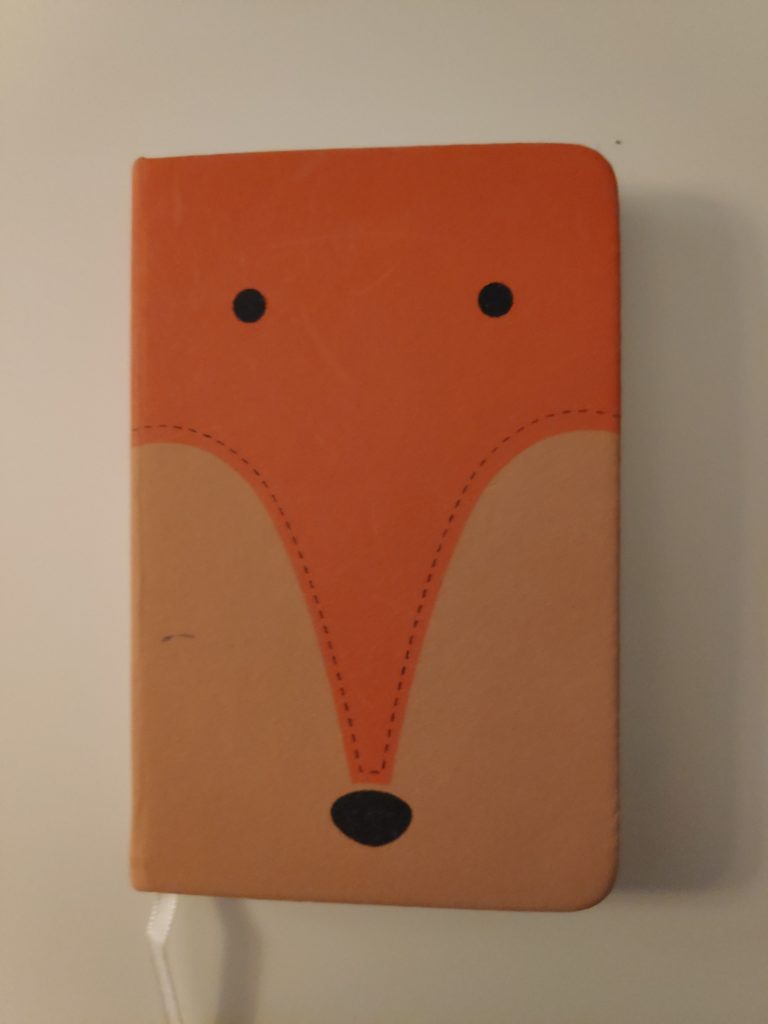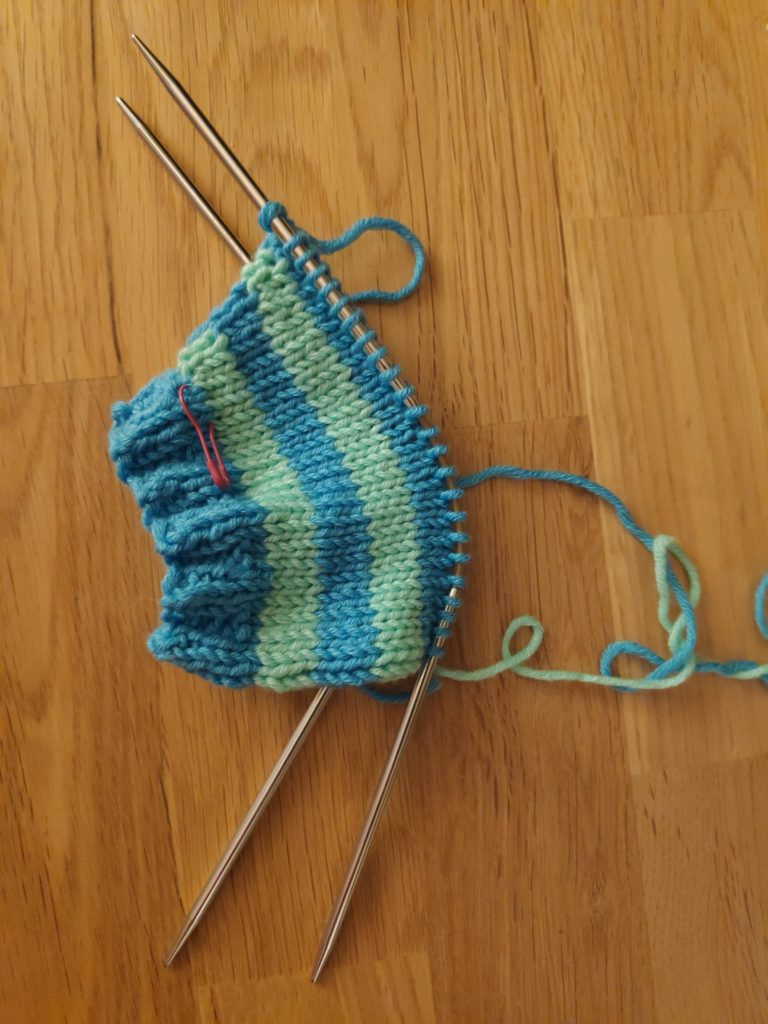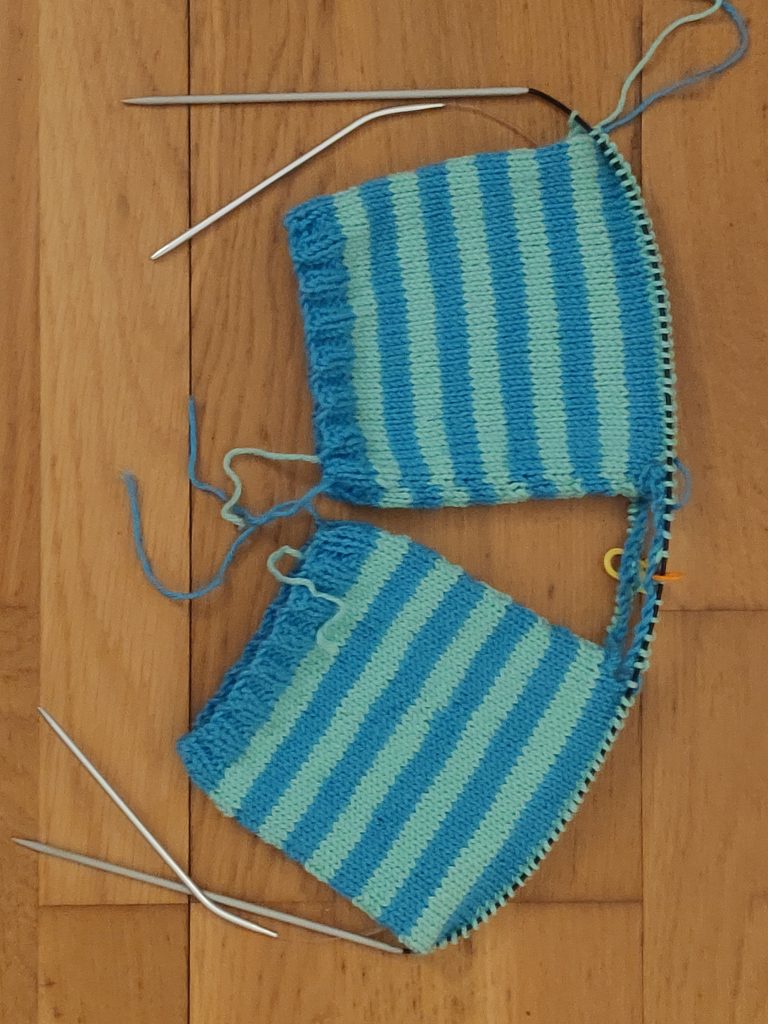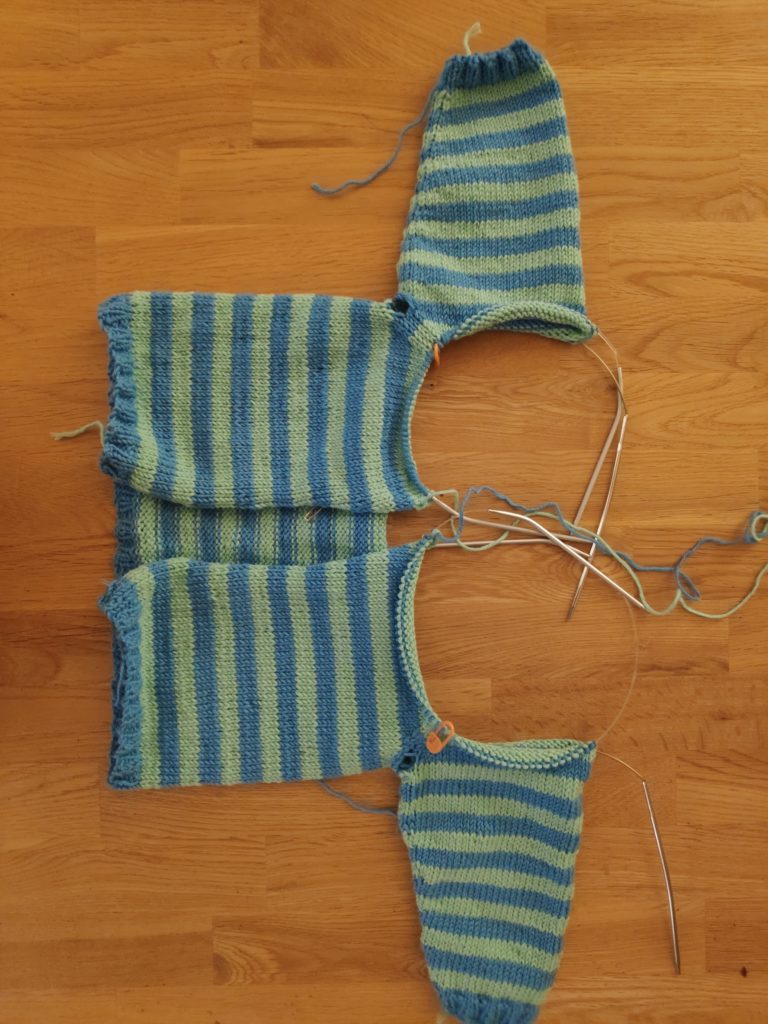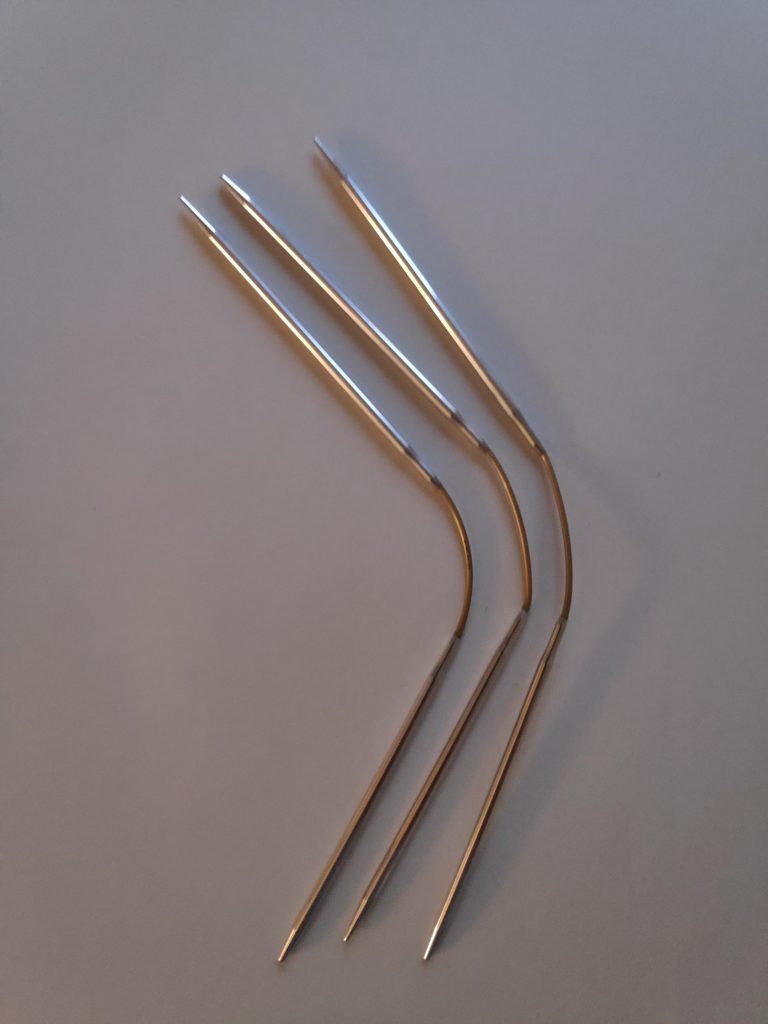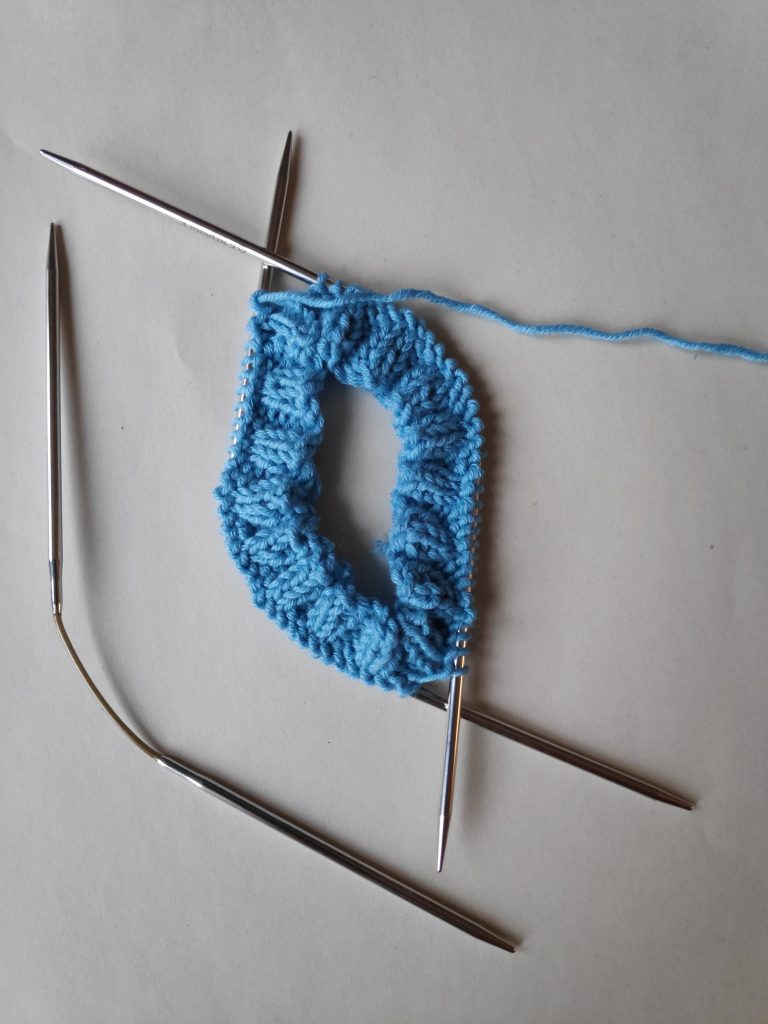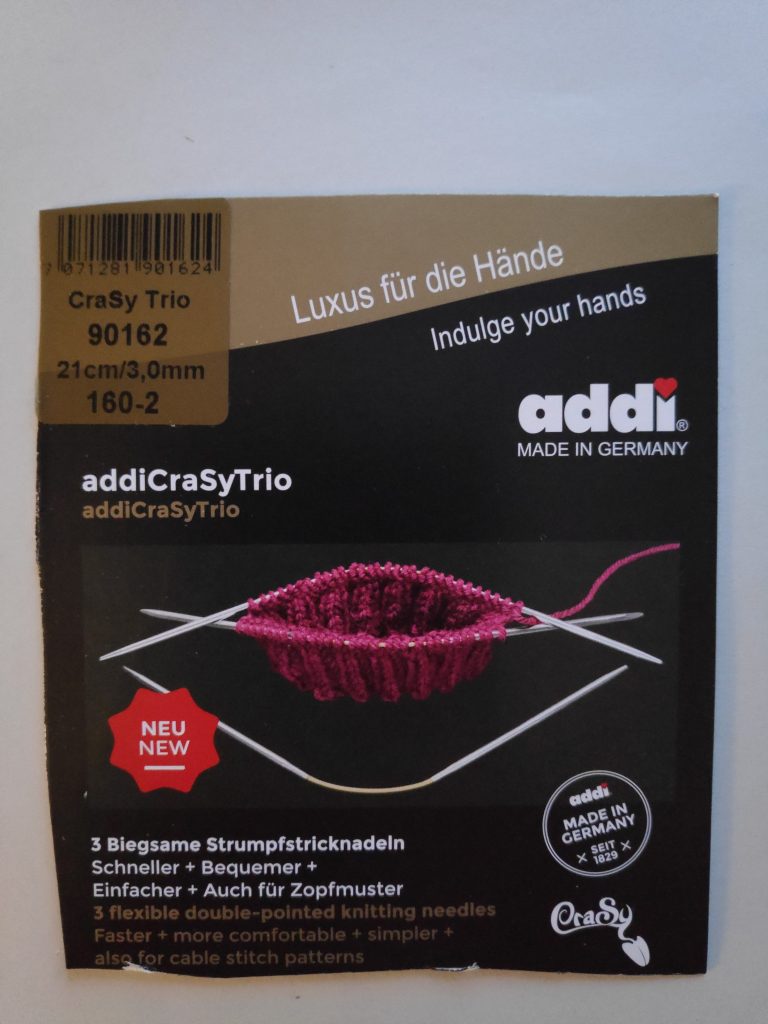I like to use the yarn from the center of the ball/skein, as it then doesn’t roll around. But as there gets less and less left in the ball/skein, there can be problems pulling the yarn from the center. What’s left has a tendency to end up in a big knot.
Solution: Use a plastic bag to hold the ball/skein of yarn, or several balls/skeins if I am using more than one color. The yarn continues to pull out from the center of the ball/skein and I avoid having a knot at the end.
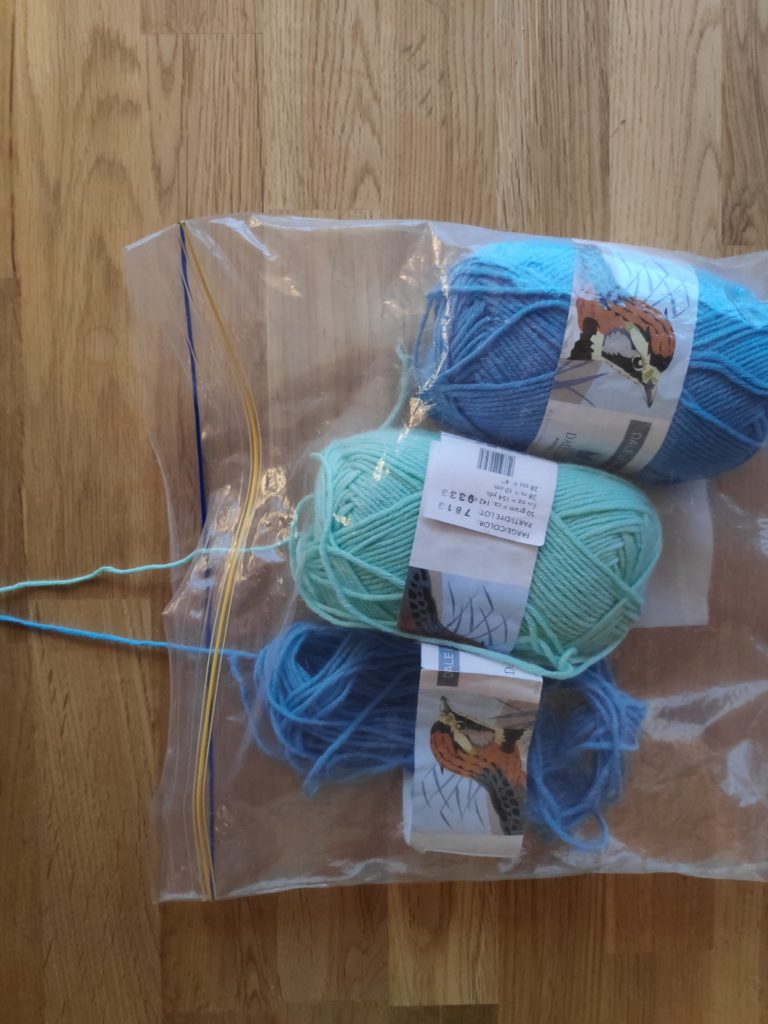
I often have several knitting projects going at the same time, often as there is a need for something simple to knit while watching television or when chatting to people, as well as a project that is more challenging. With each project in it’s own bag, it is easy to keep the yarn separate for each project.
Comment on terminology – I use a “ball” of yarn, though others might use a “skein” of yarn. Looking up various sources online, these terms might be interchangeable though some people would think that there is a difference. One manufacturer described a “ball” as something that you would use the yarn from the outside and a “skein” as something that you could use the yarn from the inside.
Most of the “balls” of yarn that I buy in Norway are easy to find the center of the ball and to use the yarn from the inside.
Using Google translate to go from Norwegian to English, a “nøste” is translated as “skein” and “garnnøste” is translated as “ball of yarn”. So even Google seems to feel that the terms are basically interchangeable. Perhaps, too, growing up in BC in Canada influenced the term that I would use.

